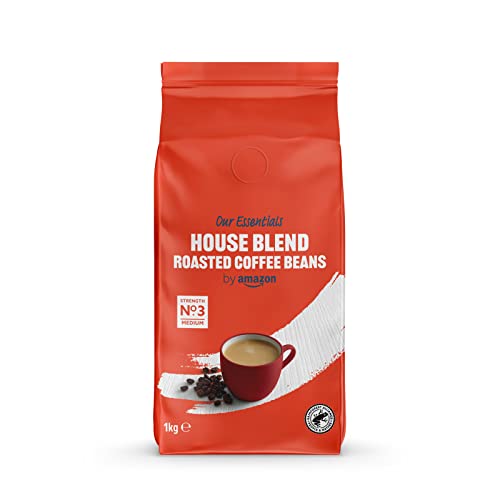The 10 Most Scariest Things About Espresso Coffee Beans 1kg
페이지 정보

본문
 Espresso Coffee Beans 1kg coffee beans price
Espresso Coffee Beans 1kg coffee beans priceA good espresso requires a blend of beans that are suited to the type of beverage. While regular medium or light roast beans can be used to make espresso, they could release tasting notes that aren't suitable for the drink.
 The finest espresso beans are smooth and nuanced with rich crema. They also contain less caffeine than drip-style espresso.
The finest espresso beans are smooth and nuanced with rich crema. They also contain less caffeine than drip-style espresso.Origin
The story of the beginnings of espresso coffee beans has a fascinating twist. The legend states that an 8th century Ethiopian goat-herder named Kaldi discovered the very first coffee plant in his herd and noticed that it had an unique invigorating effect on his herd. He began to feed his animals the fruits of the Coffea arabica plant, and they grew stronger, healthier, and started to become more active. This was the beginning of a wonderful drink, one that is consumed by people all over the world.
The brew that we know as espresso is made by pushing hot water under pressure through a bed of finely crushed coffee beans. The brew that is produced is rich and concentrated, with a layer on top of tight, smooth bubbles, referred to as crema. This is the hallmark of a fantastic espresso drink, and has spawned a whole culture around the beverage.
Espresso isn't just popular in cafes however, it can also be prepared at home. Making sure you have the appropriate equipment and roasting your own beans will help you to get that perfect cup every time. It may take a bit longer than buying coffee from the store, but the quality and taste are worth the wait.
Choosing the right espresso coffee beans is important to ensure that your espresso is delicious and rich. While many people use regular coffee beans to make their espresso, this is not recommended since they are roast differently and ground differently, and this can lead to an extremely weak or bitter the brew.
The espresso coffee beans buy 1kg coffee beans (navigate to this website) we offer are specially ground and roasted to suit the espresso brewing method and will deliver you an exceptional cup of coffee every day every time. We only source the highest quality arabica coffee beans 1kg and Robusta beans from farms that are committed to sustainable farming practices and ethical standards. We offer this speciality coffee from the Colombian region of Huila that is known for its fertile valleys and snow-capped mountains that have enriched the soil with minerals over the years.
Roast
Roasting is the process that converts raw green beans into coffee that we drink. The roasting process is also responsible for the coffee's taste color, aroma, and colour. The process of roasting requires a lot of expertise and experience to control the temperature so that the beans do not get burned or become bitter.
When roasting, beans may lose up to one fifth of their water. They also increase in size. They also begin to release carbon dioxide that causes them to expand and break and this is known as the 1st crack. The 1st Crack is the point at which sugars begin to caramelize and the bound water begins to escape. This is also the point when the structure of the bean is broken, allowing oils to flow from their pockets within the seed. It is an important moment during roasting and If it is not done properly, the coffee can be damaged.
A well-roasted, full-bodied and robust coffee will have an even and smooth profile. It will be mildly sour and a strong aftertaste, while conserving the essence of the beans. This is accomplished by roasting the beans until they turn a medium brown and have lost the majority of their moisture.
After the seeds have been roasted and cooled, it is crucial to cool them down as quickly as you can to prevent them from continuing to roast. This will release more carbon dioxide. The final outcome will depend on the speed at which they are cooked and how quickly they are cooled.
Espresso coffee is typically a blend. While single origin beans work for some brewing methods but the smoky flavours of espresso require a blend of different bean types.
To make the finest espresso, it is recommended that you purchase a top-quality espresso machine. The best machines will include an extra water tank for the espresso and a larger capacity boiler, which will allow for faster heating. To maximize the extraction quality ensure that the water tank is filled with clean, fresh water.
Dose & Yield
One gram of coffee ground is used to create one shot of espresso. The ratio of liquid espresso to ground coffee should be less than or equal to 1 kg coffee beans:2. The exact ratio will depend on the density of your specific beans. Certain coffees have more volume by weight than others when ground to the same size, this is why a precise scale is crucial!
The temperature of the brew will determine how you utilize your coffee beans. The ideal range is between 195 and 205-205 degrees Fahrenheit. This is due to the fact that the flavour compounds of the beans are extracted optimally within this range. A higher or lower temperature can affect the texture, flavour, and thickness of crema, as well as the consistency and quantity of extraction.
It is always a trade-off between strong coffee and rich flavor. The more you extract, the stronger it will become however, it also increases the possibility of bitterness and sourness. You may be tempted to make up for this by using recipes that have a high yield. When you increase the multiplier, you also increase the amount of water that flows through the grinds. This is crucial and could mean that more flavour is lost.
Dose is the most flexible lever for control, but there are many other elements that affect the strength of your espresso. The ratio is the primary element, as is the accuracy of your grinder as well as the size and speed of your portafilter, and the speed at which you pull your shot.
A higher ratio (less that 1:2) will yield a balanced, intense espresso with a smooth mouthfeel. On the other hand, a lower ratio will yield more intense but less balanced espresso. The key is finding the perfect balance for your taste. You can achieve this by changing the ratio and experimenting with the dose according to the intensity and flavour you like.
Brewing
Espresso beans are ground more finely than regular coffee beans 1kg beans and brewed with higher pressure. This results in a stronger and more concentrated shot of coffee with richer flavors and aromas. Espresso is utilized in a variety of coffee recipes like cappuccinos as well as lattes, which are usually made with milk. It can also be mixed with other types of coffee when baking or used as a garnish for desserts that are based on coffee or chocolate.
Espresso coffee can be made using a variety of brewing methods, including Turkish coffee, French press, cold drip coffee, and brew. The method of brewing you select will depend on your personal preferences and the equipment for brewing coffee you have. You can determine the best espresso by testing various brewing methods and ingredients.
Espresso beans can be used in other coffee drinks, but they are most suitable to make espresso-based drinks. Espresso beans are roasted for longer generally beyond the second crack. This gives them more dark, toasted and a more intense flavor. Espresso beans are also roasted at higher levels of volatile compounds like trigonelline 2 and chlorogenic acids 4 which are responsible for the body and bitterness of espresso.
While it is technically possible, the results would not be as desirable. Espresso beans are roasted to bring particular flavours, like fruity and chocolatey, that can be difficult to reproduce using other roasts.
When making espresso, the most important thing is to achieve a good crema. It is a thick, thick layer of coffee foam that rises to the surface of the coffee as it is extracted under a high pressure. A great crema indicates that you have combined the necessary baseline inputs of your coffee beans, grinder, resistance in the coffee bed and water temperature to create a great espresso.
The most important aspect for getting a great crema is the quality of your beans. The most ideal espresso beans are ones that have been roasting to a medium or dark roast, and that have been grinded as fine as they can be. Freshness is also crucial, as whole beans retain their flavor and taste longer than ground varieties. It is also important to store beans in an airtight jar away from heat and moisture.
- 이전글4 Dirty Little Tips About Mesothelioma Law And The Mesothelioma Law Industry 24.09.27
- 다음글This Is The Intermediate Guide On The Best Asbestos Mesothelioma Attorney 24.09.27
댓글목록
등록된 댓글이 없습니다.

